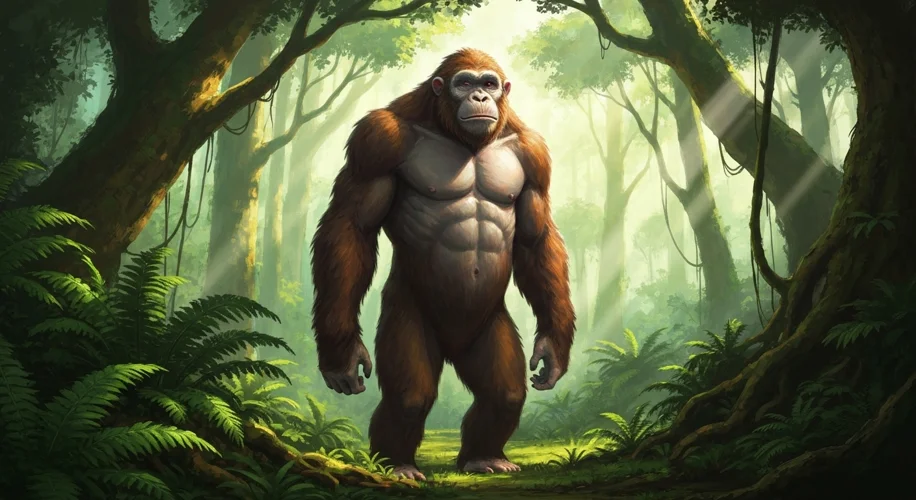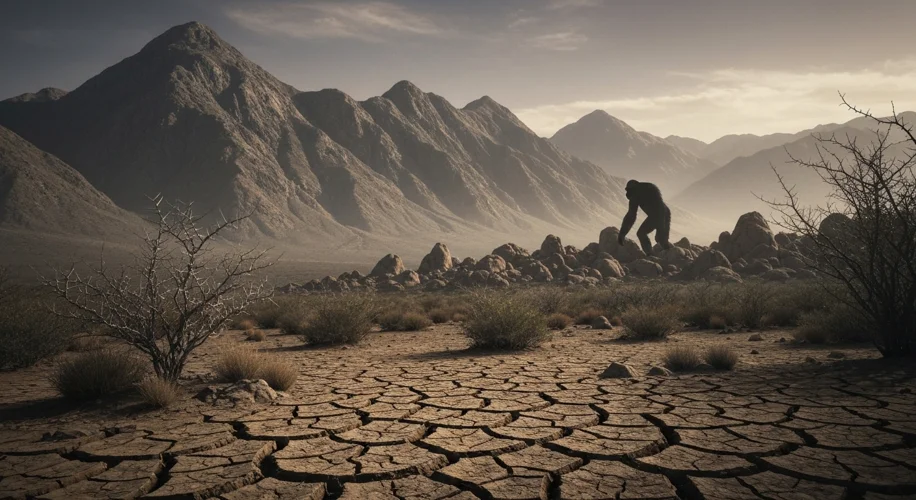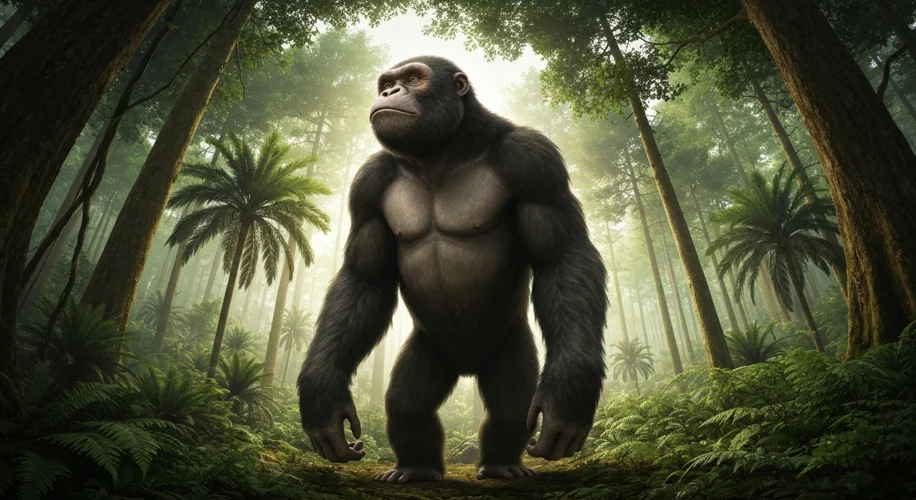Imagine a shadow falling over the ancient forests of Southeast Asia, a shadow cast by a creature so immense it would dwarf even the most imposing gorilla of today. This was the world of Gigantopithecus, the largest primate known to have ever walked the Earth. Standing an estimated 10 feet tall and weighing up to 1,200 pounds, this gentle giant roamed the jungles for perhaps a million years, only to disappear without a trace, leaving behind a profound mystery.
For decades, the story of Gigantopithecus has been pieced together from fragments – giant teeth, a few jawbones, found scattered across Southern China and Southeast Asia. The first discovery was made in a Hong Kong apothecary in the 1930s, where teeth, each larger than a human thumb, were being sold as “dragon bones.” It was the renowned paleontologist Ralph von Koenigswald who recognized these were no mythical creature’s remains, but evidence of an ape of colossal proportions.

This ape, Gigantopithecus blacki, lived during the Pleistocene epoch, a time of dramatic climate fluctuations. Its existence overlapped with early hominins, including Homo erectus, and potentially even early Homo sapiens. Its diet, as revealed by wear patterns on its massive molars and isotopic analysis, consisted primarily of fibrous plant material, such as bamboo and other vegetation. This suggests a largely herbivorous lifestyle, much like modern orangutans, though its sheer size would have necessitated an enormous daily intake of food.
The sheer scale of Gigantopithecus presents a fascinating evolutionary puzzle. How did such a massive primate evolve? What were the environmental pressures and opportunities that favored such gigantism? Theories suggest that the abundant plant resources in the tropical forests provided the caloric base for such a large body size. Furthermore, its immense size may have offered protection against predators, though the identity of any natural threats to an animal of its stature remains speculative.
But then, around 100,000 years ago, the story of Gigantopithecus comes to an abrupt end. The fossil record falls silent. What led to the extinction of this magnificent creature? The answer likely lies in the complex interplay of environmental changes and evolutionary pressures.
One leading theory points to climate change. As the Pleistocene progressed, the climate in Southeast Asia began to shift, becoming cooler and drier. This would have drastically impacted the availability of its primary food source: bamboo. A reduction in the bamboo forests, coupled with increased competition for dwindling resources, could have placed immense stress on the Gigantopithecus population.

Another contributing factor might have been the arrival and expansion of hominins. While direct evidence of interaction is scarce, it’s possible that competition for resources intensified. As human populations grew, they would have increasingly encroached upon the habitats and food sources of Gigantopithecus. The more adaptable and resourceful hominins, with their developing tool use and social structures, may have gradually outcompeted their much larger, more specialized primate cousins.
The extinction of Gigantopithecus serves as a stark reminder of the fragility of life, even for creatures of immense size. It highlights how finely balanced ecosystems can be, and how subtle shifts in climate or the arrival of new competitors can lead to the demise of even the most dominant species. This ancient giant, once a formidable presence in the Asian landscape, now exists only in fossil fragments and the lingering questions they pose about the history of life on our planet.
While we may never know the exact circumstances of its final moments, the story of Gigantopithecus is a compelling chapter in the grand narrative of evolution, a tale of a giant lost to the sands of time, prompting us to wonder what other colossal wonders might have once roamed the Earth, unseen and unrecorded.

